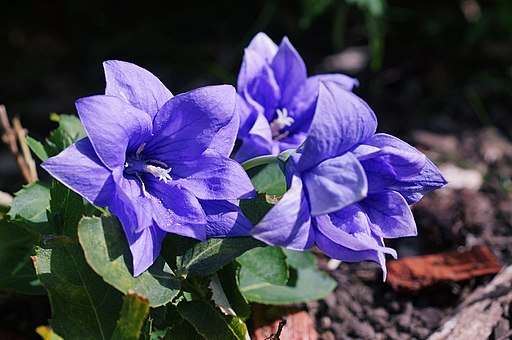
Description:
Despite not resembling bells in appearance, balloon flowers (Platycodon grandiflorus) are clump-forming perennials that belong to the bellflower family of plants that are easy to grow. Instead, the 2- to 3-inch star-shaped flowers are produced by swollen, balloon-like buds. This easy-to-grow variety has vivid blue-violet blooms that last all summer, but there are also cultivars that have pink and white flowers. Balloon flowers develop quickly so they can bloom in their first year; they are typically planted in the spring, after the risk of frost has gone.
Habitat
It is indigenous to China and Japan and a member of the Campanulaceae family.
Uses
One nutritional supplement with numerous health benefits is the balloon flower. It is well recognized to strengthen the immune system, enhance digestion, and lessen inflammation. Additionally, it may lessen worry and stress, enhance the quality of sleep, and lower the chance of developing several cancers.

Species
Platycodon grandiflorus Astra series: This variety produces ten-petaled, double flowers that are either pink, blue, or white. They’re the perfect option for starting with seeds.
P. grandiflorus Fuji series: With 30-inch stems with blue, pink, or white flowers, this is the tallest and most widely available type.
P. grandiflorus ‘Komachi’: This variety’s purple-blue blooms remain in their fluffy pillow stage even after they have flowered.
P. ‘Sentimental Blue’: This dwarf cultivar has several 1- to 2-inch purple flowers and grows to a height of about 6 inches.
Plant Care
- Light
Planting balloon flowers in full sun (at least six hours of sunlight on most days) will yield the most blossoms. They will, however, tolerate some shade and may even prefer it when the afternoon light isn’t too strong.
- Soil
Balloon flowers like loamy, organically rich soil that drains well. Clay and other thick soils are inappropriate for their growth. They prefer soil with a pH between 5.5 and 7.5.
- Water
Young plants require regular moisture in their soil, but not excessive wetness. Once grown, balloon flowers can withstand brief droughts but need an appropriate amount of soil moisture. They won’t require a lot of additional irrigation until the soil dries out due to a prolonged drought.
- Temperature and Humidity
Hardy balloon flowers thrive in USDA growing zones 3 through 8. They prefer temperatures between 60 and 80 degrees Fahrenheit, but if there is some midday shade, they may tolerate higher temperatures. In the autumn, existing plants will die back into the ground due to frost, which can also kill off immature plants. If balloon flowers have the proper amount of soil moisture, they can withstand both dry and humid air conditions.
- Fertilizer
In rich soil, balloon flowers usually don’t require additional fertilizer. However, they can recover some of the energy they use up blooming during the growing season by covering themselves in compost in the autumn. Use an all-purpose, slow-release fertilizer in the early spring if your soil is poor.
Table





